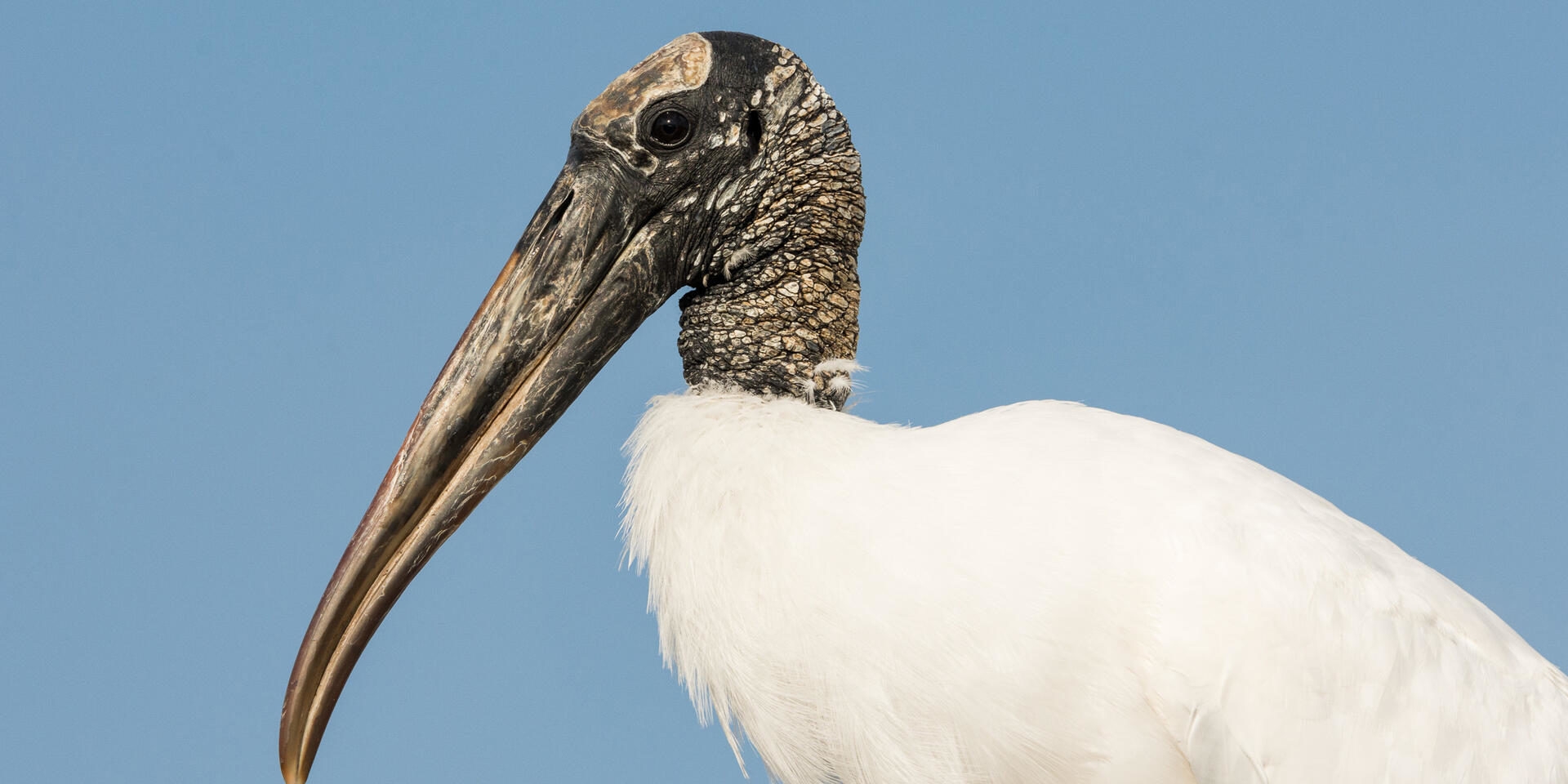Bird of The Week: Wood Stork
SCIENTIFIC NAME: Mycteria americana
POPULATION: 250,000; 30,000 in the U.S.
TREND: Decreasing
HABITAT: Breeds from southeast U.S. through Central and South America
The Wood Stork has many folk names, including Wood Ibis (due to its downcurved, ibis-like bill) and flinthead (for its scaly-looking bare head). The word “wood” probably refers to the bird’s favored nesting habitat in lowland wetlands.
This is North America’s only breeding stork, and the U.S. population is now federally listed as Threatened, downlisted from Endangered in 2014 due to some population recovery. However, like the Snail Kite, Wood Storks face continuing threats from habitat degradation and invasive species.
Uncertain Future in Florida
Wood Stork are widespread and fairly common throughout Latin America and the Caribbean, although populations there are also probably declining for similar reasons.
Florida holds the largest nesting population of Wood Storks in the United States. Canals, irrigation, and other water control projects have long affected the flow and path of the water channeling into the Everglades, the stronghold of this species.
These factors, combined with severe droughts occurring over several years, have caused significant declines in Wood Stork and other wading bird populations.
Raccoons are major Wood Stork nest predators in the Everglades, particularly when drought allows them easy access to colonies. Invasive plants and animals, especially the exploding population of escaped pythons, pose a serious threat to habitat and birds.
In addition, pesticides and mercury accumulating in water and fish can kill adult storks.
Social Storks
These social storks nest colonially, with up to 25 nests in one tree. Pairs often mate for life.
In Florida, Wood Storks breed during the late winter dry season, when their fish prey are concentrated in shrinking pools. They regularly fly up to 12 miles from the nesting colony while foraging and will go much farther during droughts in search of food.
Wood Storks have a specialized style of feeding, relying on touch to catch fish. A group feeds by slowly wading through the water with open bills; when a bird’s bill touches a fish, it quickly snap it shut to secure the meal.
Although not considered true migrants, juvenile Wood Storks disperse northward after the breeding season, and adults move in response to food availability. They are impressive fliers, with flocks soaring as high as 6,000 feet on warm air thermals.
Wood Storks at ABC Reserves
Wood Stork occurs at several reserves in ABC’s Latin American Bird Reserve Network; Barba Azul Reserve in Bolivia is a particularly good place to spot them.
“On my last trip to Barba Azul, I saw flocks of Wood Storks congregating in the wetlands,” said ABC’s Dan Lebbin. “Most were juvenile birds following a few adults, who were adeptly capturing red-bellied piranhas out of shallow lagoons and gulping them down.”
SOURCE: American Bird Conservancy (abcbirds.org)


